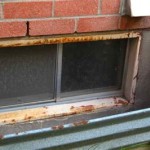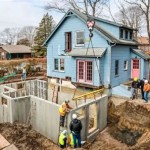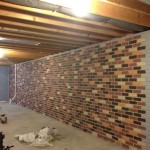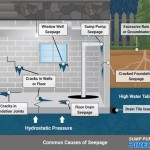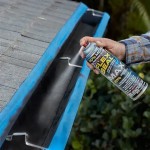Insulating Your Basement Ceiling: A Comprehensive Guide
Insulating the ceiling of your basement is crucial for several reasons. It can help regulate temperature, reduce energy consumption, and improve indoor air quality. Proper insulation keeps the basement warm during winter and cool during summer, creating a more comfortable living space. Moreover, it prevents cold air from entering the rest of the house, resulting in lower energy bills. Additionally, insulation acts as a sound barrier, minimizing noise from outside or other parts of the house.
Installing insulation in the basement ceiling is a relatively straightforward process that can be completed in a few hours. Before you start, ensure you have the necessary materials and tools:
- Insulation (fiberglass, cellulose, or spray foam)
- Staple gun
- Staples
- Measuring tape
- Safety glasses
- Gloves
- Mask
Follow these steps to insulate your basement ceiling:
1. Safety First
Put on your safety glasses, gloves, and a mask to protect yourself from dust and debris. Ensure the work area is well-ventilated.
2. Measure and Cut Insulation
Measure the length and width of the basement ceiling and cut the insulation panels accordingly. Cut the panels to fit snugly between the joists.
3. Install Insulation
Staple the insulation panels to the bottom of the ceiling joists. Start at one end of the ceiling and work your way across, ensuring there are no gaps between the panels.
4. Overlap Joints
For maximum insulation, overlap the joints between the insulation panels by a few inches. This prevents cold air from leaking through.
5. Trim Excess
Once the insulation is in place, trim any excess material around the edges of the ceiling.
6. Cover the Insulation
Install drywall or paneling over the insulation to create a finished look and protect it from damage.
7. Check for Air Leaks
Use a flashlight or heat gun to check for any air leaks around the insulation. Seal any gaps with caulk or weatherstripping.
By following these steps, you can effectively insulate the ceiling of your basement, creating a more comfortable and energy-efficient living space.
Additional Tips
- Use a higher R-value insulation for better thermal resistance.
- Consider installing a vapor barrier between the insulation and the drywall to prevent moisture buildup.
- If you have access to the attic above the basement, insulate the floor joists as well.
- If you encounter any electrical wiring or plumbing during the installation, consult a qualified electrician or plumber before proceeding.
- Always follow the manufacturer's instructions for the insulation you are using.
Insulating your basement ceiling is a worthwhile investment that can improve your indoor comfort and energy efficiency. By following the steps outlined above, you can achieve a well-insulated basement ceiling that will benefit your home for years to come.

Should I Insulate My Basement Ceiling And Walls Aire Serv

Ceiling Insulation In Your Basement

What Is Basement Ceiling Insulation And It Worth

Basement Ceiling Insulation Interior Inspections Internachi Forum

Best Insulation For Basement Ceilings And Why You Need It

Insulate A Basement Ceiling With Building Moxie As The Diy Guy

How To Soundproof A Basement Ceiling

What To Know About Soundproofing A Basement Ceiling

How To Cover Insulation In Basement Ceiling Barrier Energy

Ideas For Covering Insulation In Basement Ceiling Doityourself Com Community Forums
Related Posts

